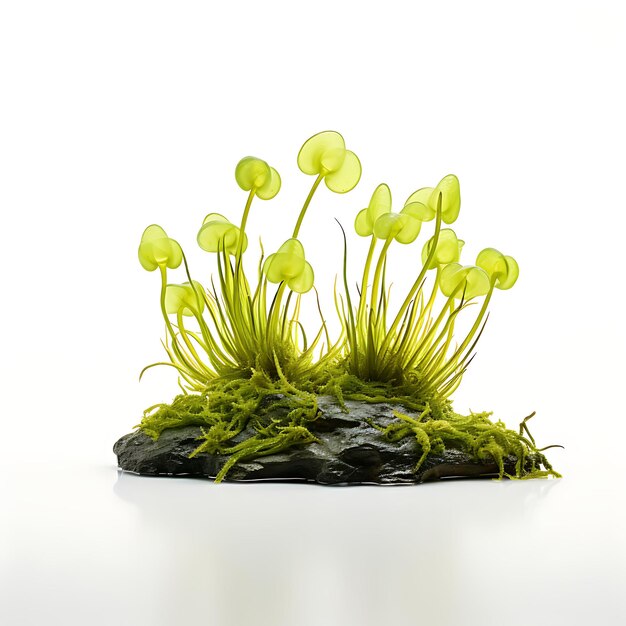Welcome, fellow nature enthusiasts, to a delightful journey into the whimsical realm of Sundews! These fascinating carnivorous plants are not just your average flora—they’re sticky predators, the James Bonds of the botanical world, using cunning traps to catch unsuspecting prey. Strap in as we uncover some intriguing and downright amusing facts about these sticky wonders.
Table of Contents
1. Sticky Predator’s Sticky Situation
Imagine being an insect buzzing around, minding your own business, when suddenly, you find yourself stuck to what seems like a harmless leaf. Surprise! Sundews are equipped with tiny, glandular tentacles adorned with droplets of sticky goo. These droplets glisten like morning dew, but don’t be fooled—they’re deadly traps for small insects that dare to land.
2. Sweet and Deadly
Sundews lure their victims with a promise of sweetness. Their sticky secretions contain sugary substances that attract insects searching for a sweet snack. Little do they know, this sugary treat is the last meal they’ll ever have! It’s like offering candy to someone and then realizing it’s a trap set by a sneaky confectionery villain.
3. Botanical Flexibility
These plants are true masters of adaptability. Found on every continent except Antarctica, sundews have evolved to thrive in a variety of habitats—from bogs to sandy soil. They’re like the adventurers of the plant world, exploring different environments and adapting to whatever nature throws at them, all while looking fabulous with their sparkling dew. To learn more about carnivorous plant predators that thrive in different environments, read this blog titled “Plant Predators: 10 Mind-Blowing Facts About Plants that Eat Meat“.
4. Speedy Digestion

Once an unsuspecting insect lands on a sundew’s tentacles and becomes stuck, the plant wastes no time in starting its digestive process. Enzymes released from glands on the tentacles break down the insect’s exoskeleton, gradually turning it into a nutritious soup that the sundew absorbs to fuel its growth. Talk about fast food—sundews have it down to a science!
5. Survival of the Fittest
In the cutthroat world of carnivorous plants, sundews have some serious competition. They compete with other carnivores like pitcher plants and Venus flytraps for a slice of the insect pie. It’s like a botanical battle royale, where each plant tries to outsmart and out-eat its rivals. Who knew the plant kingdom could be so dramatic?
6. International Appeal
Sundews have captured the hearts (and appetites) of people around the globe. In Japan, they’re admired for their elegant appearance and cultivated as ornamental plants. In Australia, where sundews are native, they’re part of the local biodiversity and even considered a symbol of resilience in harsh environments. It’s like they’ve become international celebrities, adored everywhere they grow!
7. A Gardener’s Dream… or Nightmare?
For those brave enough to attempt cultivating sundews, be warned—they have a mind of their own. These plants require specific care, including moist, nutrient-poor soil and plenty of sunlight. It’s like having a high-maintenance pet that also happens to eat bugs. But hey, if you’re up for the challenge, having a sundew in your garden can be a conversation starter like no other.
8. Names That Make You Smile
Sundews are part of the Droseraceae family, which includes some delightfully named cousins like the butterworts and bladderworts. It’s like a botanical family reunion where everyone has quirky nicknames. Who wouldn’t want to be friends with plants named after butter and bladders? To learn more about Bladderworts and other carnivorous plants, read this blog titled “Plant Predators: 10 Mind-Blowing Facts About Plants that Eat Meat“.

9. Inspiration for Science Fiction
Believe it or not, sundews have made appearances in literature and even inspired stories about alien plants. Their otherworldly appearance and carnivorous habits make them perfect candidates for tales of botanical intrigue. Perhaps somewhere in the universe, there’s a planet where sundews reign supreme, and insects have learned to fear their sticky embrace.
10. Sundews: Nature’s Little Engineers
Beyond their carnivorous habits, sundews play an important ecological role. By controlling insect populations, they help maintain balance in their ecosystems. It’s like they’ve taken on the job of pest control, all while looking fabulous and sticky.
Conclusion
In conclusion, sundews are more than just pretty plants—they’re nature’s tiny, sticky wonders, blending beauty with deadly efficiency. Whether you’re fascinated by their carnivorous habits, intrigued by their global presence, or amused by their quirky adaptations, there’s no denying the charm of these botanical marvels. So next time you spot a sundew glistening in the sun, take a moment to appreciate the whimsical world of nature’s sticky delights.
And remember, when life gets tough, channel your inner sundew—be adaptable, be cunning, and if all else fails, just stick to what you know best (literally).
If you’re hungry for more sundew facts, check out these links:
Happy exploring, fellow nature enthusiasts!



